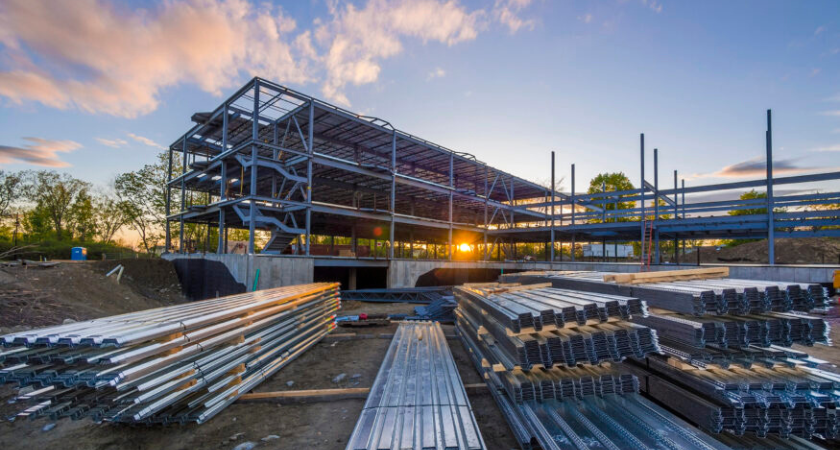
Construction professionals are facing unprecedented uncertainty as the cost of building materials shifts unpredictably under new U.S. tariff policies and clean-energy tax credits begin to expire. Both changes are tightening budgets and destabilizing cost estimation across commercial and residential projects.
.jpg)
Since President Donald Trump returned to office in January, pricing for imported steel, lumber and other key building components has surged and dipped repeatedly as new tariffs have been imposed, adjusted and, in some cases, scaled back entirely over the past year. The ongoing fluctuation has created what many designers and builders describe as a volatile market where predicting cost has become nearly impossible.
For architects trying to advise clients, the current market is a constant moving target. Construction cost estimation is now a “losing battle” for firms, said Rachel Smith-Streck, director of strategy and partner at TAP Architecture in Oklahoma City.
“Just in general, tariffs are affecting everything, so you can’t pinpoint your target,” Smith-Streck said. “Usually, we can do some cost estimation, but now it’s a losing battle. What we think the numbers are going to be when we get to working with the construction team, who has a real job to do, (the cost) is over here,” she said, gesturing up, “and we thought it was right here,” gesturing down.
Material price uncertainty is only part of the problem. A new wave of federal policy changes is further complicating long-term project planning, especially on buildings considering energy-efficient systems like geothermal, solar and battery storage.
Smith-Streck emphasized that the impending expiration or reduction of several commercial and residential energy tax credits for HVAC and renewable technologies is also driving up final construction costs. Trump’s “One Big Beautiful Bill” Act, signed in July, accelerated the rollback of incentives originally established under President Joe Biden’s 2022 Inflation Reduction Act. Those credits were previously scheduled to remain in effect until 2032.
One of the most consequential changes is the reduction of the Business Energy Investment Tax Credit (ITC). On Dec. 31, the current 30% credit expires, leaving only a 6% base credit through 2028 before it fully phases out. The ITC applies to commercial installations of solar, storage, geothermal, fuel cells, wind and other systems designed to lower building emissions.
“I know the expiration is coming up, and that’s going to be a challenge, mainly because (geothermal) is something we always push if our client can do it,” Smith-Streck said. “If you can afford that upfront cost, it’s way better, but obviously, now that you don’t have those credits either, that’s going to be a challenge.”

TAP Architecture is currently working with Mid-America Christian University, where geothermal energy is under consideration. The system could significantly reduce operating costs for a long-term campus facility, but the elimination of credits affects feasibility.
“When we’re thinking about their project, if they can buy that in the beginning of a new build, it’s going to save them money in the long run, because they’re going to keep that building forever,” Smith-Streck said. “It’ll be easy to maintain, and it’ll be cheaper to run, but if you can’t afford it, the tax credits aren’t (going to be) there that helps some of our clients afford it. That’s a difficult thing.”
Another incentive on the chopping block is the Section 179D Commercial Building Deduction, which rewards energy-efficient upgrades. Once valued at up to $5 per square foot, the deduction will begin declining next year, dropping to $1.80 per square foot in 2026 and phasing out fully after 2027.
Architects warn that as long as tariffs and incentives remain unpredictable, early cost estimates may no longer be reliable tools for project budgeting. Many firms are recommending new strategies, including contingency allowances, earlier materials purchasing, and re-evaluation of energy systems before schematic design is complete.
Builders are increasingly treating pricing as a “snapshot in time,” valid only for days or weeks rather than months. That shift represents a dramatic change for an industry where planning windows often span years.
Originally reported by Katrina Crumbacher in Journal Record.